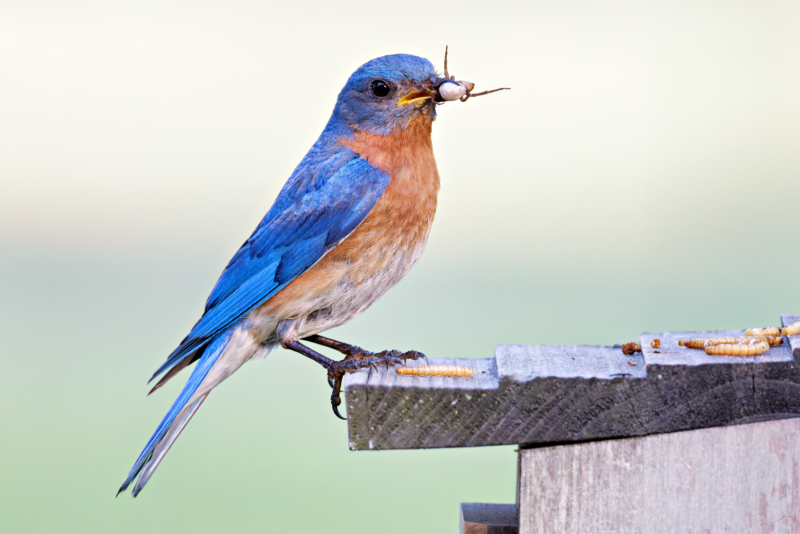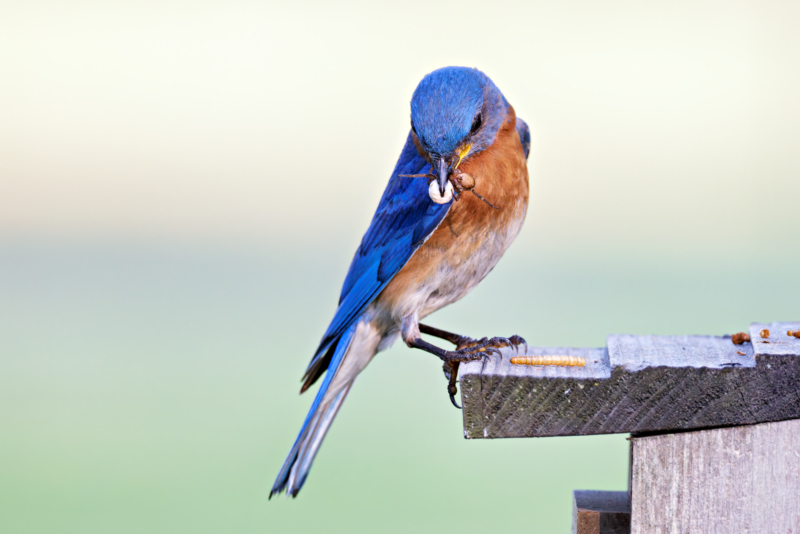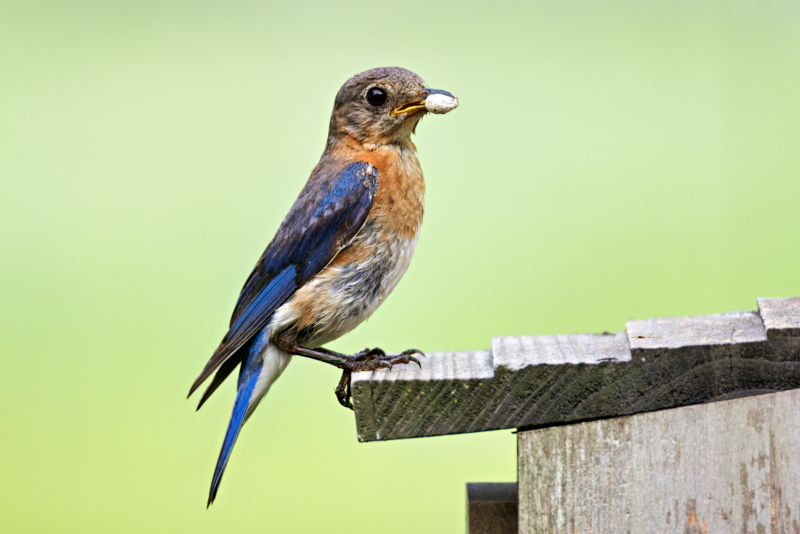As an avid backyard nature photographer, I’ve recently witnessed some fascinating behavior from the Eastern Bluebirds nesting in my yard. On two separate occasions, I’ve seen these beautiful birds bringing what appears to be spider egg sacs to feed their young. This unexpected observation has led me down a rabbit hole of research and speculation about the intricate relationships between birds, spiders, and their offspring.

In one instance, I observed a bluebird carrying what looked like a wolf spider along with a white egg sac. Wolf spiders are well-known for their maternal care, typically carrying their egg sacs attached to their spinnerets at the rear of their abdomen. However, the egg sac I saw didn’t appear to be attached to the spider. This led me to wonder: Had the bluebird somehow separated the egg sac from the spider during capture?

Wolf spiders aren’t the only arachnids that exhibit maternal care. Many spider species guard their egg sacs or stay with their spiderlings until they’re ready to venture out on their own. It’s possible that the bluebird caught a spider of another species that was simply guarding its eggs nearby.
The other observation I made was of a bluebird carrying what I believe to be another spider egg sac, though I admit I’m not entirely certain. The white, round object in the bird’s beak certainly resembles a spider egg sac, but without closer inspection, it’s difficult to be sure.

These observations raise several intriguing questions:
- Are Eastern Bluebirds specifically targeting spider egg sacs as a food source for their young?
- If so, what nutritional benefits might these egg sacs provide to growing bluebird chicks?
- How common is this behavior among bluebirds or other insectivorous birds?
As a nature enthusiast, I find these questions captivating. They remind me of the complex and often surprising relationships that exist in our own backyards. Every time we step outside and observe the natural world around us, we have the opportunity to witness something new and unexpected.
I’d love to hear from other birders or naturalists who may have observed similar behavior. Have you seen bluebirds or other birds feeding spider egg sacs to their young? What other surprising food items have you seen birds bring to their nests?
Let’s continue to observe, question, and marvel at the wonders of nature that surround us every day. You never know what mysteries you might uncover in your own backyard!
Steve Creek
